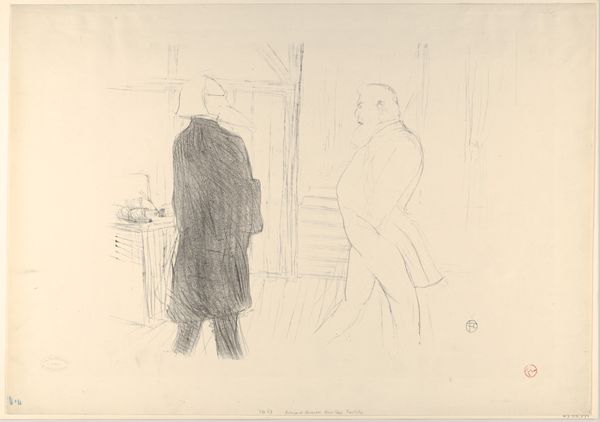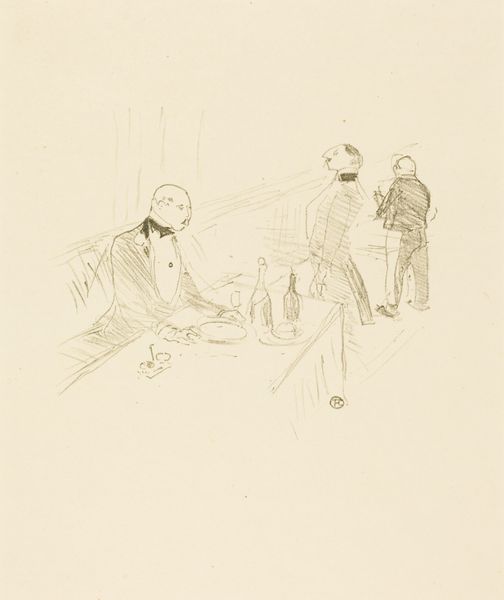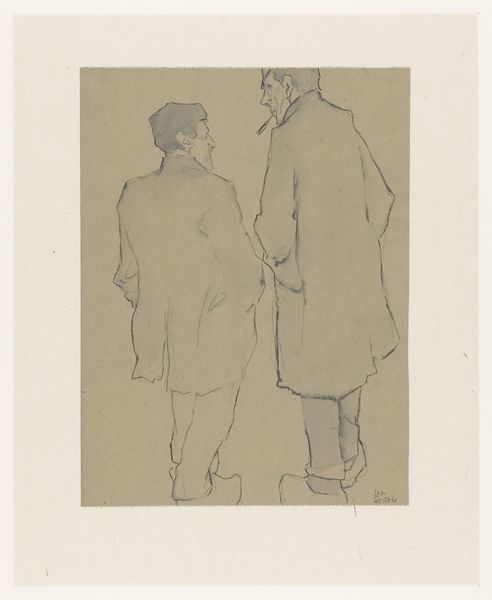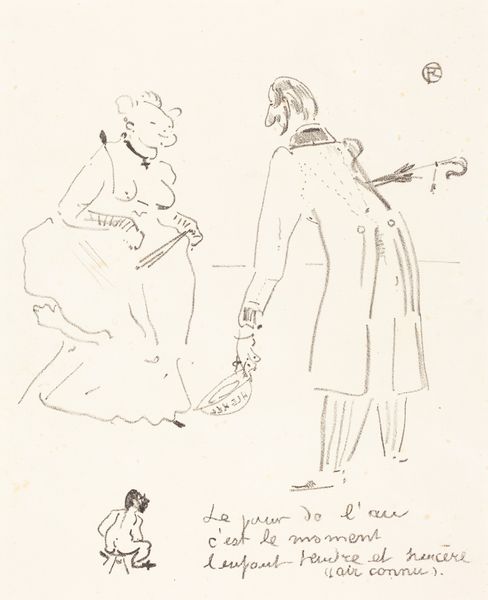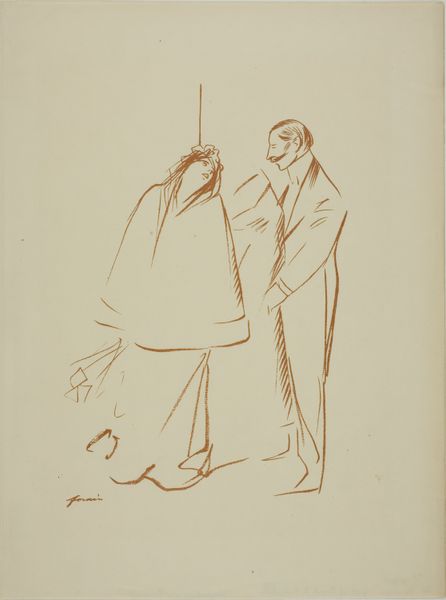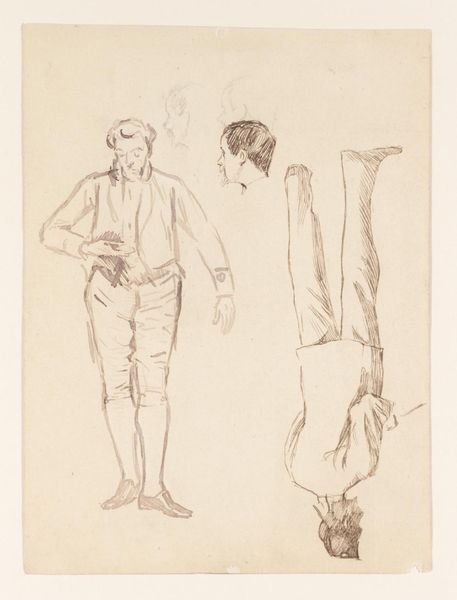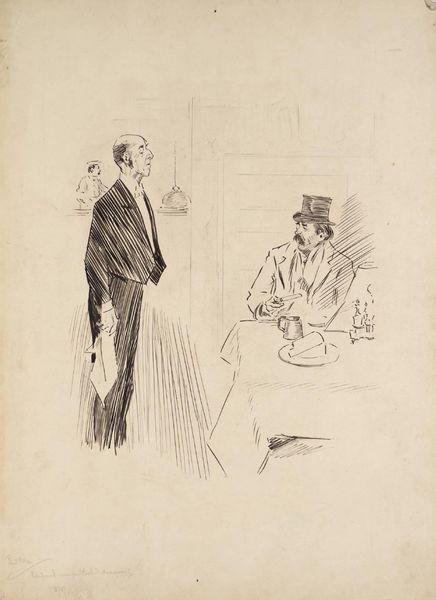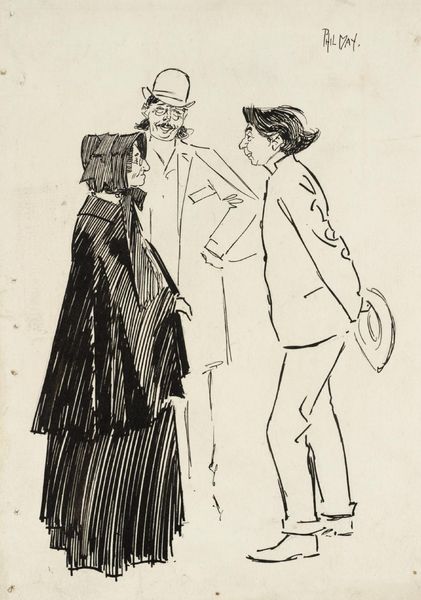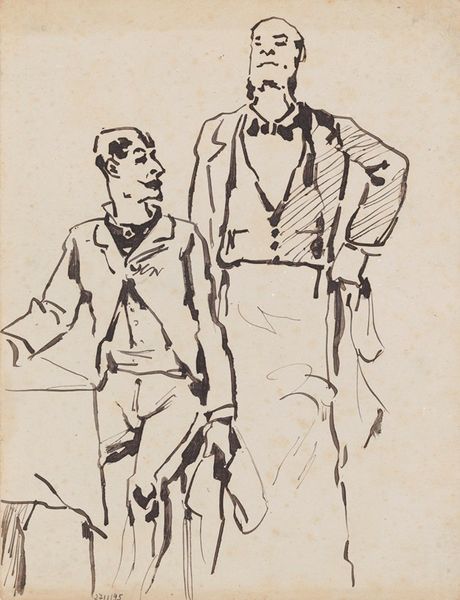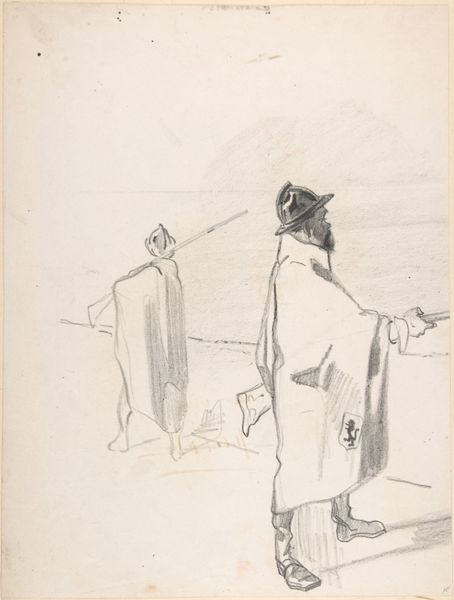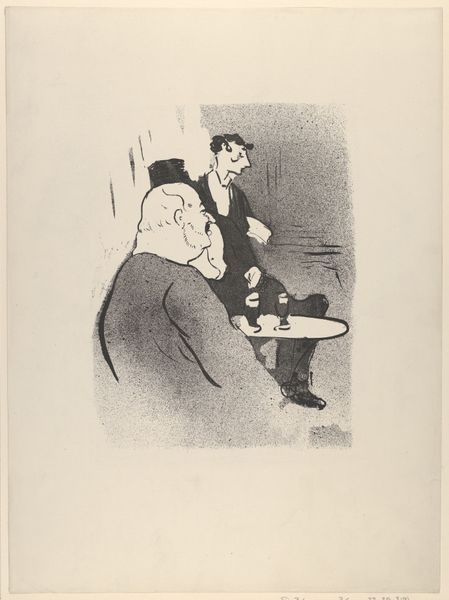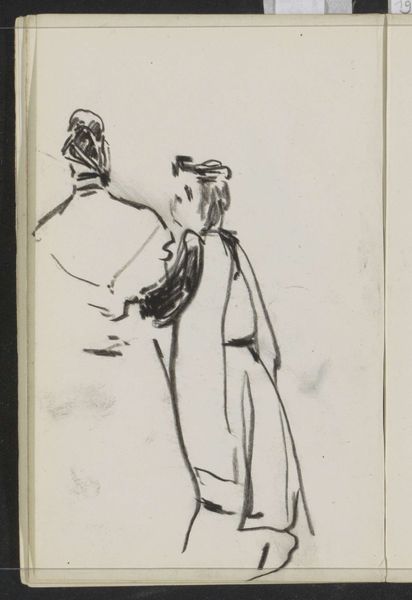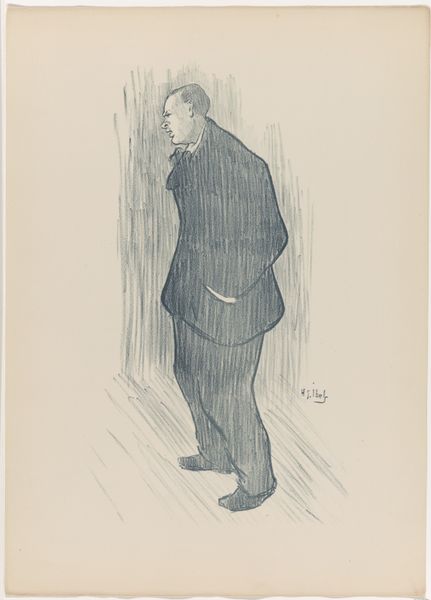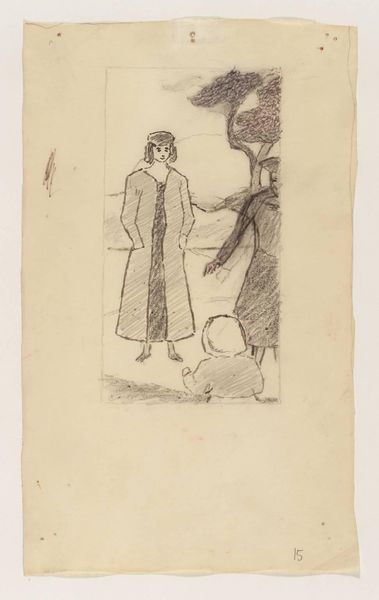
The First Vendor of Jourdan and Brown (Le premier vendeur de Jourdan et Brown) 1897
0:00
0:00
Copyright: National Gallery of Art: CC0 1.0
Curator: We’re looking at "The First Vendor of Jourdan and Brown," a pencil and etching piece by Henri de Toulouse-Lautrec, created around 1897. Editor: My first impression is how incredibly spare it is—almost ghostly. There's a vulnerability in the delicacy of the lines, a quiet observation that’s quite compelling. Curator: It captures the changing urban landscape of Paris at the turn of the century and hints at themes around masculinity. Toulouse-Lautrec had a keen eye for capturing marginalized figures in rapidly transforming French society. This depiction of figures connected with commercial spaces is one facet of that interest. Editor: The placement of the figures is key. The man facing us, in that formal attire—coat, hat, he represents a kind of established, almost old-world status. But, juxtaposed, you have the vendor in his patterned jacket and trousers. Is there some indication of social negotiation, power at play? Curator: I would certainly read the piece as suggesting something about economic power dynamics, who holds it, and the very particular performance surrounding that access in Paris at this time. Even down to the seemingly ghostly “Shirts!” etched at the edge of the image. Editor: I also notice how indistinct their faces are. Almost obscured, flattened. Is it representative of dehumanization through labor or social class? Their identities seem less important than their function within this environment. Curator: Absolutely. I would interpret the obscured faces, too, as another marker in the men's intersectional roles within commerce and society—rendered almost interchangeable in their roles as consumers and salesmen. The relative absence of detailed features asks us to focus not on personality but performance and function. Editor: So even though the style is associated with a kind of lightness of touch – impressionistic capture of a fleeting moment – there is serious social commentary layered beneath. It isn't just about the image itself but the historical and sociopolitical contexts embedded within it. Curator: Indeed, viewing Toulouse-Lautrec through this lens, we realize he's engaging with questions about modernity, visibility, and who gets to participate fully in public life. It also reflects how art plays into social roles. Editor: This work allows us to see that familiar urban symbols possess much deeper historical echoes about how we organize ourselves as a society. Curator: Precisely. By engaging the social contexts interwoven with form and style, art helps us consider the social and financial narratives shaping and being shaped in everyday experience.
Comments
No comments
Be the first to comment and join the conversation on the ultimate creative platform.
